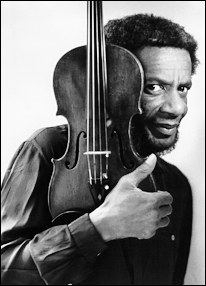As a teaser for my upcoming CD on New Albion, provisionally titled Private Dances (not due until September), I upload a pre-final edit of The Day Revisited, my microtonal piece for flute, clarinet, fretless bass, and two sampler keyboards. Twenty-nine pitches to the octave, unequally spaced. Though you can occasionally hear the effort that woodwind microtonality involves, I’m really happy with it, one of those pieces that asymptotically approaches the perfect Kyle Gann piece I hear in my head every day. Pat Spencer plays flute, Meighan Stoops clarinet, Bernard Gann bass, and Blair McMillan and I keyboards. The other day I gave a talk about my music at Stetson University down here in Florida, and a student asked, “How do you feel about form?” I told her that my favorite form was to start something and then just keep going.

 Bernadette Speach has passed along to me the extremely sad news of the death, Saturday, from lung cancer, of violinist-composer
Bernadette Speach has passed along to me the extremely sad news of the death, Saturday, from lung cancer, of violinist-composer